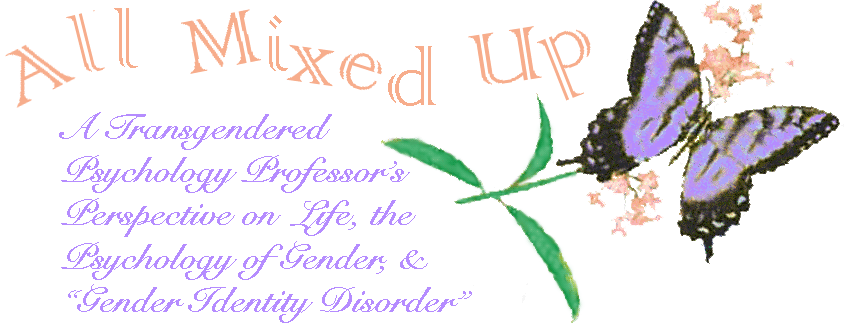
|
|

|
Ray Blanchard defines gender dysphoria as something more akin to gender euphoria. His "Pure Gender Dysphoria Scale" operationally defines gender dysphoria by asking 5 questions about wanting to be women. Since fantasizing is a more extreme form of wanting, it's possible Blanchard has simply defined phenomena so that his theory is correct.
This is page 11 of 13. [1] [2] [3] [4] [5] [6] [7] [8] [9] [10] [11] [12] [13]
Given the large number of serious scientific flaws I have discussed, I will not belabor the issue by noting all of the flaws in other findings in this or in the three remaining empirical articles. These papers neither replicate the original results nor do they correct for any of the above methodological errors or over-interpretation of data. There is however, one measure I feel is especially important to discuss because I have seen one of Blanchard's operational definitions influencing research with other populations such as tomboys and intersexed children. Operational definitions are the way we measure something we can't see. For example, we can't measure "gender dysphoria" directly because there is no way to directly know how uncomfortable someone is with their birth gender assignment. Blanchard (1993) created a "pure gender dysphoria" scale. In this questionnaire, male participants are asked 5 questions about why and how they wanted to be women. Despite being a measure of dysphoria, not one question is about how they discomfort being men! When Blanchard finds a link between gender dysphoria and autogynephilia, he finds a links between wanting to be a women and fantasizing about being a women. Since fantasizing is a more extreme form of wanting, it's possible Blanchard has simply defined phenomena so that his theory is correct.
This is page 11 of 13. [1] [2] [3] [4] [5] [6] [7] [8] [9] [10] [11] [12] [13]
|
|
|